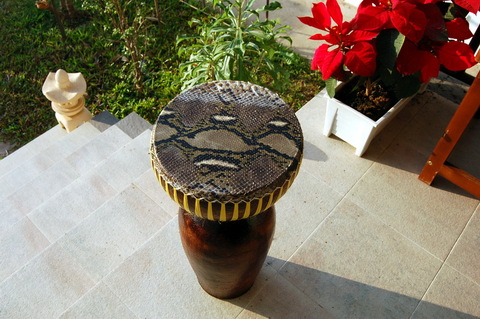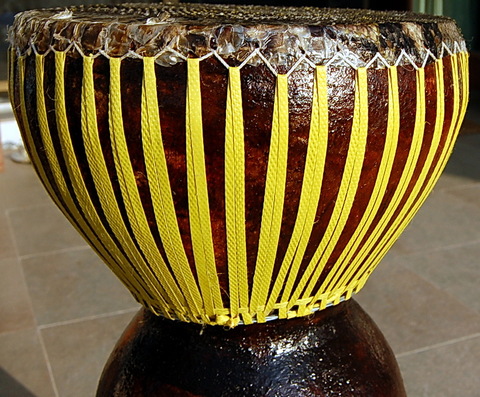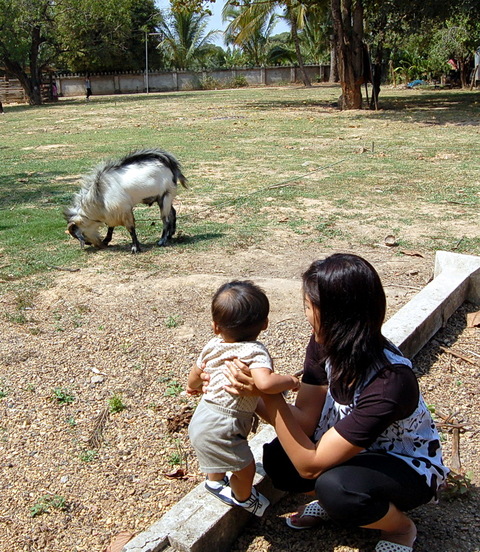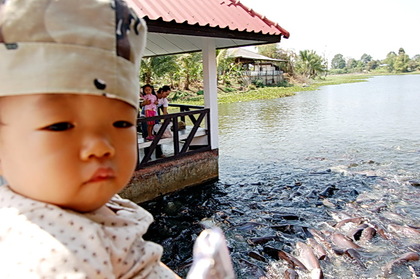

On the way to my uni’s sports day a couple weeks ago, we stopped off at a famous temple (from the ancient “kao noi ka mae” story) where they sold various trinkets, sticky rice baskets, and musical instruments at a series of stalls on the dusty temple grounds.
After testing out this drum and hearing how nice it sounded, my coworker and I debated about who should buy it. He said he had too many drums already, so I bought it. The man who sold it to me didn’t say who made the drum, who killed the snake, or if it tasted delicious, and I didn’t ask. Just having a drum with a snakeskin head is cool enough. One thing was kinda gross, though. The first day of pounding on it, scales were flying off everywhere. I looked down once to find my forearm covered in snake scales that were sticking to my sweaty skin. It was djembeistic and cathartic as hell.
Basic Specs
- 100% Natural Boa Constrictor Head, 9″ (~23 cm)
- Glazed pottery body
- Expertly tied with 100% natural cotton twine and 100% artificial plastic straps
- Deep throbbing bass response
I will cry out loud when this thing eventually breaks, it’s way too cool.





